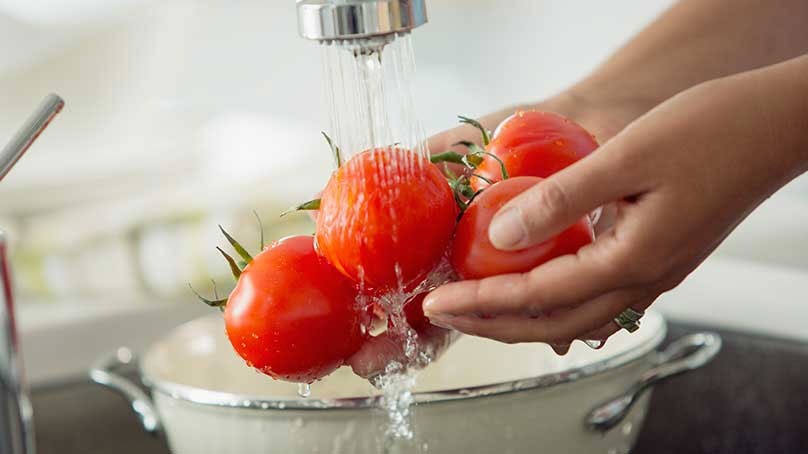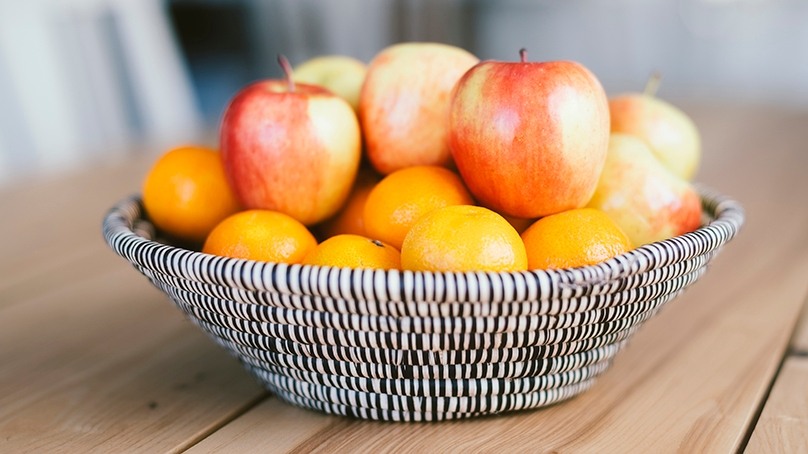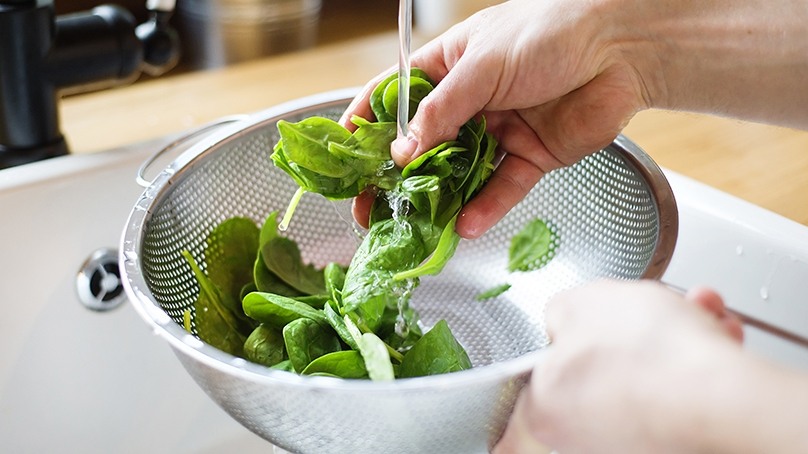Fruit & Vegetable Storage Tips: How to Keep Your Produce Fresh
February 25, 2020 | Food Lion


You probably visit your local Food Lion weekly (maybe multiple times a week) and pick up the groceries you need to nourish your family. More times than not, your shopping list may include produce items, right? And once you get your fruits & veggies home, it’s important to store them the right way so they stay fresh longer. After all, no one likes to have to toss produce too soon.
So, follow these fruit and vegetable storage tips and keep your produce fresh! We’ll reveal when to refrigerate (or not), which fruits and veggies to keep separate, when to wash them and the right place to store your produce. Now, let’s dive into the juicy details!

To Fridge or Not to Fridge?
Putting fresh produce in the refrigerator extends the life of those wonderful fruits and veggies, right? Well, not necessarily.
So, for our first fruit and vegetable storage tip, let’s identify which produce items belong in the refrigerator and which ones should be stored elsewhere. While it's true that you can lengthen the life of certain types of produce by popping them in the crisper drawer or on a shelf in the refrigerator, some fruits and vegetables should stay on your counter in a cool, dark spot for freshness and maximum flavor. Here is a quick list of what you should and shouldn't refrigerate so you can get the most out of your produce:
- Refrigerate: Leafy greens (kale, chard, spinach), berries, cherries, grapes, broccoli, cauliflower, celery, green beans, soft squash (zucchini and yellow squash), mushrooms, radishes, carrots, and beets
- Don't Refrigerate: Whole melons, tomatoes, apples, avocadoes, bananas, citrus fruits, hard squash (butternut, acorn, spaghetti), garlic bulbs, potatoes, and fresh herbs
- Start on the Counter, Then Switch to the Fridge: Sliced tomatoes, sliced melon, avocadoes that ripened on the counter, ripened stone fruit (peaches, plums, nectarines), cut onions, and cut garlic
Keep These Fruits and Veggies Separate
As some types of produce ripen, they release ethylene, a type of gas that can cause other fruits and vegetables to overripen prematurely. When that happens, the flavors change and ripening happens too fast, which can lead to food waste. That’s why this fruit and vegetable storage tip is all about keeping certain produce items separate from others.
Produce that gives off ethylene:
- Apples
- Stone Fruits (peaches, plums, nectarines, and apricots)
- Bananas
- Cantaloupe
- Honeydew Melon
- Pears
- Mangoes
- Kiwis
- Tomatoes
Produce that spoil quickly when stored with ethylene producers:
- Carrots
- Green Beans
- Eggplant
- Lettuce
- Leafy Greens
- Cucumbers
- Watermelons
- Potatoes
- Asparagus
- Yellow Squash
Location, Location, Location
You’ve probably heard the saying that real estate is all about location, location, location, right? The same is true for storing fruits and vegetables. If you want to keep your produce fresh for longer, carefully consider where you're storing it.
If your refrigerator is like most, you've probably noticed that you have two (or more) crisper drawers. And those high-humidity or low-humidity settings may seem mysterious. But, when you follow this fruit and vegetable storage tip, you'll know exactly what to do.
Keep ethylene-emitting fruits and vegetables in the low humidity drawer, which lets the gas escape to prevent premature spoiling. Anything that typically wilts — think spinach, arugula, lettuce or strawberries, for example — should go in the high-humidity drawer. By keeping moisture inside the drawer, the produce stays crisp and fresh longer.

To Wash or Not to Wash?
It’s always a good idea to wash all of your fruits and veggies — yep, even the ones you're going to peel. However, it's important to remember there are some things that you should wait to wash to keep them fresh. Berries, bell peppers and mushrooms are the perfect examples.
There's good news though, too. If you like washing your produce right away, most fruits and veggies can stand up to it. Just make sure everything is very dry before storing it.
Fruit and Vegetable Storage Tips
Knowing where to store them and when to wash them is one part of the equation. When you want your fruits and vegetables to last as long as possible, there are a few more steps you can take. Try the following fruit and vegetable storage tips:
- Some produce items, including broccoli, lettuce, and carrots are best stored in separate storage bags in your crisper drawer to make sure they stay fresh longer.
- Store leafy greens in storage bags with a little air left inside before sealing them tightly.
- If you prefer prepping your produce all at once, place washed, dried, and cut-up fruit & veggies in containers lined with paper towels to keep moisture out.
- No room in the crisper drawer? Try specialty produce bags and containers that prolong freshness. This will help mimic the conditions inside the crisper drawer.
- Fresh herbs wilt faster in the refrigerator. Instead, pop them in a glass jar with a little water (like a bouquet) and place them on your kitchen counter.
Now that you've learned some fruit and vegetable storage tips to keep them fresh longer, head to your local Food Lion to stock up on old favorites and new selections. If you're unsure how to prepare a fruit or veggie, check out our delicious recipes, which make it a breeze to jazz up mealtime any night of the week.







Create Your Display Name